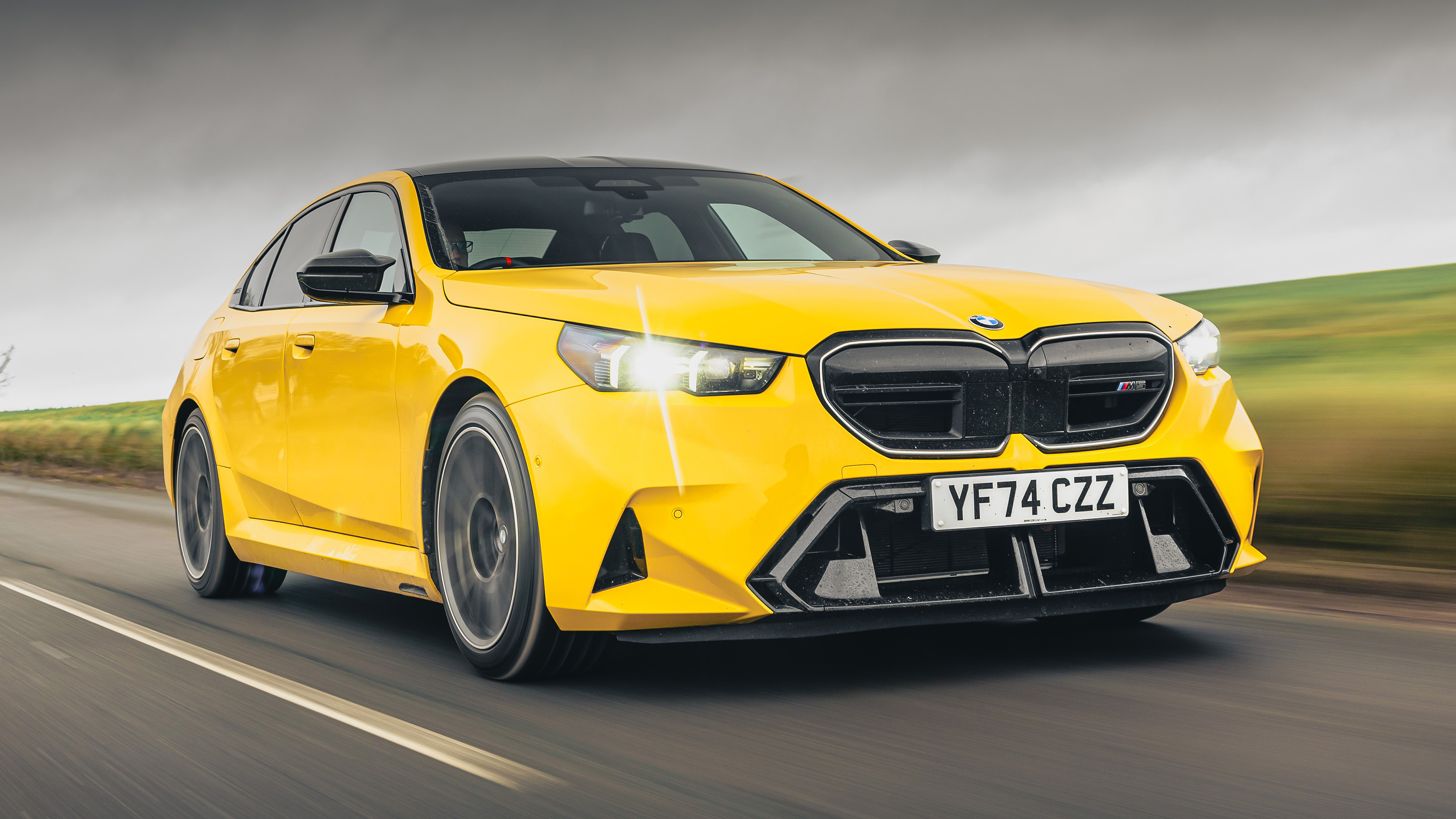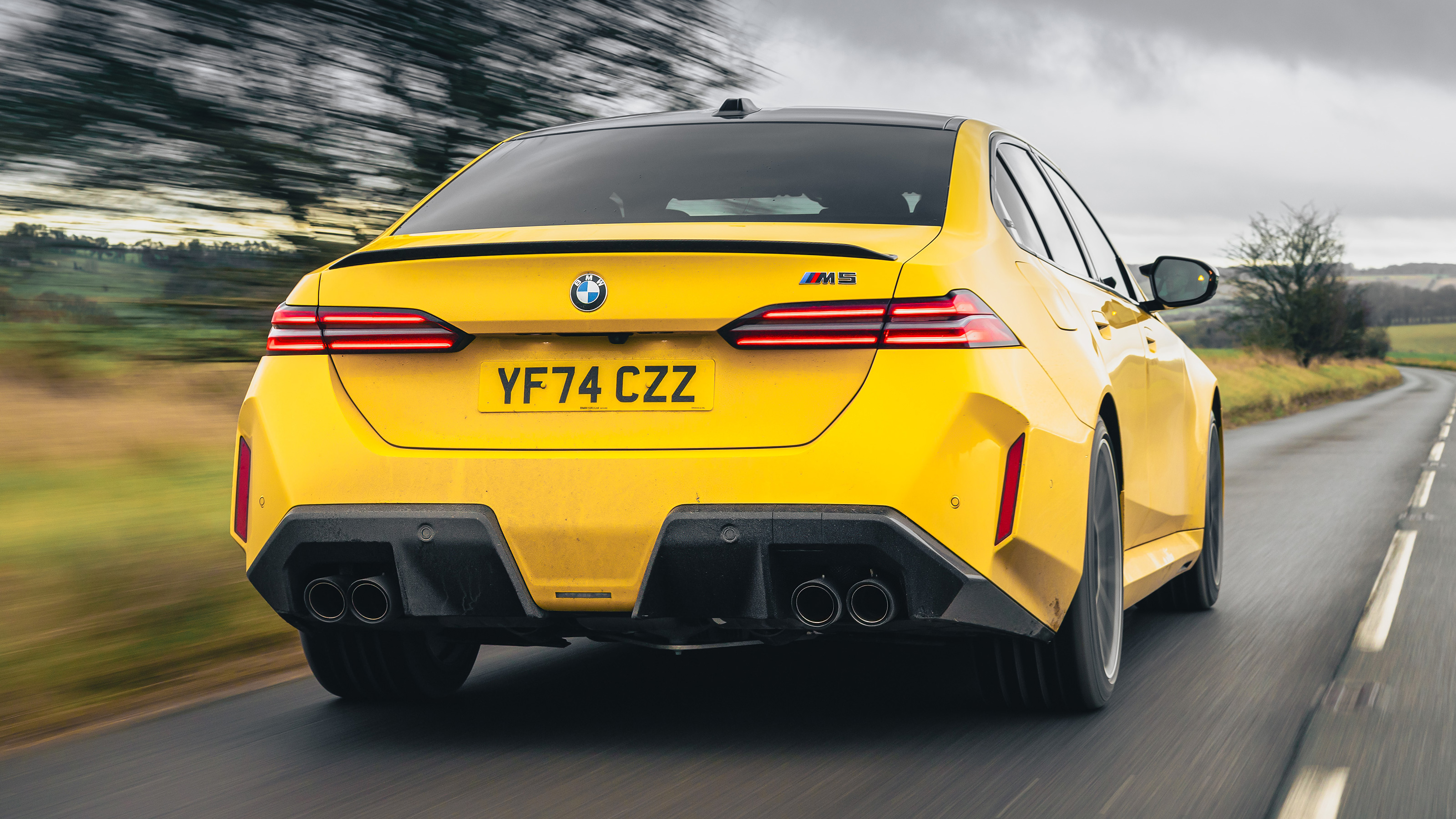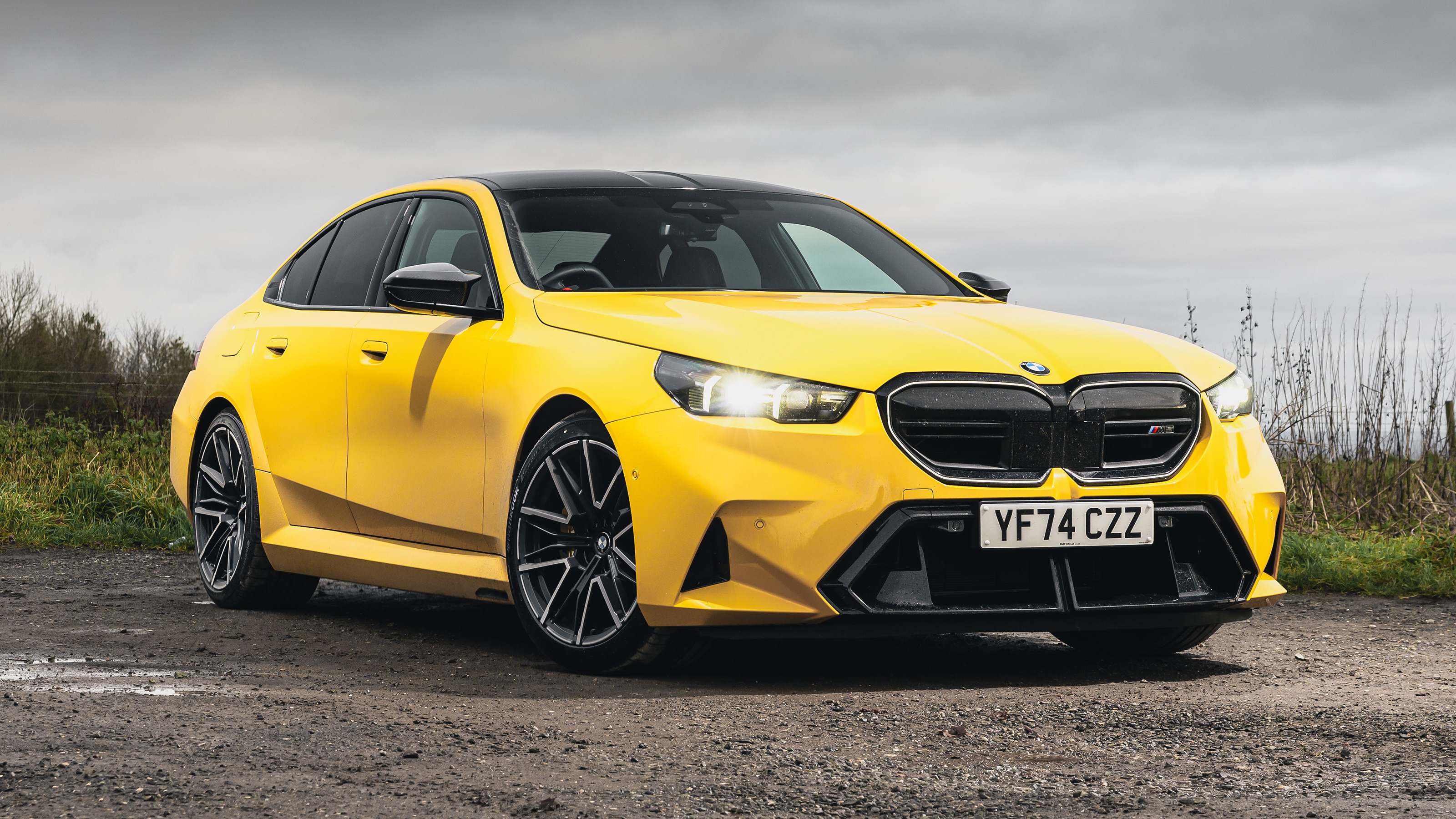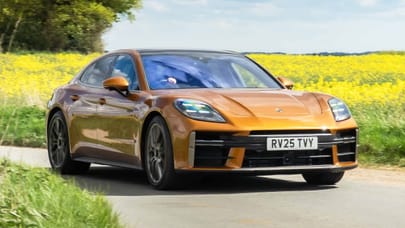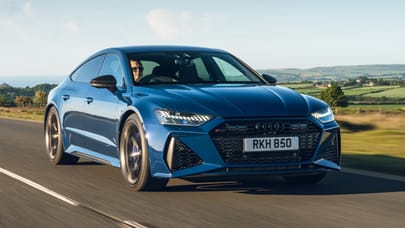
Good stuff
40+ miles of EV-only running, tax-efficient, very fast, very competent and well controlled
Bad stuff
Very heavy, over-reliance on tech, not a naturally M5-ish M-car, interior complexity
Overview
What is it?
The newest BMW M5, seventh son of a long line of quietly epic super saloons. But this time the recipe has changed quite a bit. Rather than the usual ‘put a bigger engine in it’ school of thought, the M5 is now a plug-in hybrid with an 18.6kWh battery and a possible 42 miles of EV-only running.
You can even charge it at up to 7.4kW on a normal home wallbox, and take advantage of handy tax breaks. Which doesn’t sound all that M5, to be honest.
But there is recompense. When the electric motor isn’t busy providing sole motivation, it adds its 194bhp/206lb ft to the 577bhp/553lb ft produced by the familiar 4.4-litre biturbo V8 carried over and lightly modified from the previous car. Total system output is 727bhp and 737lb ft.
That sounds like an ungodly amount?
727bhp is, by any metric, a lot. But there’s an active rear differential and enough customisable, stepped traction aids to make it a pussycat if you want it to be. Plus the M5 is all-wheel drive. It’s always a little rear-biased, but you can mess with the systems to make it even more so, or indeed just stick it in two-wheel drive mode and set fire to the rear tyres. It’s not a subtle burnout in the new M5; it just evaporates rubber.
Switch 4WD back on, engage launch and it’ll see off 0-62mph in 3.5 seconds and on to a limited 155mph, or 189mph (still limited) if you option the M Driver’s Package and have an autobahn commute.
Hmm, that sounds quick, but not as quick as I’d expected.
And you’re right because it’s not actually as fast as the old one. Weird, huh? All that extra power and yet slower than the 591bhp last generation car, which had a claimed 0-62mph time of 3.4 seconds.
That’s because the last generation car weighed 1,855kg, giving it a power to weight ratio of 319bhp/tonne, whereas this car’s figure is 299bhp/tonne. Because it weighs 2,435kg. That’s right, the M5 has put on near enough 600kg in the space of one generation. Something that affects the whole driving experience.
Ok then, is it fun to drive?
Ah. Here’s the interesting part. The new M5 is still voraciously fast, and more than capable of the numbers. Launch control is regular and impressive, grip generally very good, even in rear-drive mode the traction it finds is very impressive. Set the car up via the various menus and you can find a balance between chassis dynamics and traction that disguises the near 2.5-tonne kerbweight brilliantly. It really doesn’t feel as heavy as it is.
Until you go looking for the secondary signals. There’s no steering feel. No feel in the brakes either, and if it does start to lose traction and move around, well, the weight can take over. The controls all operate accurately – the steering is precise with good resistance and weight, but it’s not a feelsome car.
Nevertheless, on a sweeping, fast road, the M5 really can destroy distance in imperious fashion. It’s dominant and rock solid on a motorway or autobahn. And you also become aware of the myriad of systems mucking about with the physics and the experience. And that means the M5 doesn’t feel very natural, almost a bit gamified.
An example: you can define a ‘Boost’ setting by pulling the left hand paddle for more than a second to max-out all the power settings for overtakes – at which point the head-up display flashes ‘BOOST’ in capital letters and flashes like a disco. Which is essentially what we used to call ‘kickdown’ accessed by the simple expedient of pressing the throttle pedal into the carpet.
Expect it’s very programmable?
Every. Single. Parameter. About a dozen of them, from screen layout to brake feel. Thank god for the two shortcut ‘M’ buttons on the wheel. But there’s so much variance in the systems, the Goldilocks setting is frustratingly hard to find.
The noise is plumbed into the cabin and sounds digitised: the car isn’t very loud from the outside at all, and the pops ’n’ bangs from the exhaust in the more aggressive modes are the same every time. It’s a map, not an organic expression of effort.
There’s also the rubbery bounce through the eight speed auto ‘box when upshifting which is meant to feel more aggressive, but just feels like the engine mounts are drunk. It’s fun for a bit, but then you wish this was a simpler car, with a more focussed idea of what it wants to be. Yes, EV-only running is handy and really does work, but defining an M5 by its convenience and efficiency doesn’t feel right.
Do you think it looks right?
Not particularly. As standard the 5 Series isn’t the prettiest car in the world, and the M5 tries hard to walk the line between muscle-up and looking like a strap-on bodykit.
The new front end gapes with cooling apertures, new brake-cooling vents, a 75mm stretch in the width at the front and 48mm swell in the rear arch linked by deeper sills. But they’re not just wrap-over arches or bolt-on flares over the 21-inch front and 22-inch rear wheels: these are proper wide arches with a bit of form to them.
But not enough. Compared with the gurning front end the sides lose form and impact, and compared to an Audi RS6 or RS7 it doesn’t have anything like the stance and attitude.
At the back there’s a new rear diffuser, staggered quad exhaust pipes and a little M-specific bootlid spoiler. Plus the usual M-Power rear view mirrors and various carbon options. Indeed, you can have a panoramic roof or a carbon version that saves 30kg. Still not pretty, but at least purposeful. Though when anyone points out that the rear bumper looks like a stylised pair of pants, you can’t unsee it.
What does it cost?
£111,405. Which we know sounds a lot but in the grand scheme of exotic supersaloons actually represents pretty good value for money. An Audi RS6 starts at £112,545, and is a much simpler, cheaper car to build, and the same applies to Porsche’s 493bhp, £125,600 Panamera GTS. So BMWs profit margins must be wafer thin. Both of those offer a more involving driving experience.
Other rivals are mostly SUV-shaped since the Mercedes-AMG E63 died in 2023, which means you’re looking at everything from an Audi RSQ8 to Lambo’s Urus. Which are essentially the same car underneath. Normally we’d say there’s a yawning gulf in driver appeal between saloon and SUV, but in this instance that’s narrowed a fair bit.
And what about electric? You’re already halfway there if you’re considering the M5, and the Audi e-tron RS GT and Porsche Taycan Turbo are both impressive machines – a 691bhp Taycan GTS can be yours for near M5 money (£117,500). Just don’t ask about the depreciation curve. On either the Porsche or BMW.
What's the verdict?
This has become a car defined by its control systems and cleverness. It’s a brilliant car in many ways, dominant in certain situations, absolutely capable. But an M5 has always been a little bit of a hot rod. Something with a rebellious edge. The addition of the plug-in hybrid element, the way the car has adapted and changed itself to cope with the additional weight… it’s not very ‘M5’.
It’s not that supersaloons need to be manual and delete airbags, but this feels like the tipping point between being a top-spec 5 Series and an M5. In many ways it feels like a very fast i5 – it can do the numbers and destroy roads, but doesn’t actually appear very interested in doing so. Its character is restrained, it’s not got the soul that we’re looking for.
The Rivals
Trending this week
- Car Review
Bentley Brooklands
- Car Review
Ferrari Amalfi




